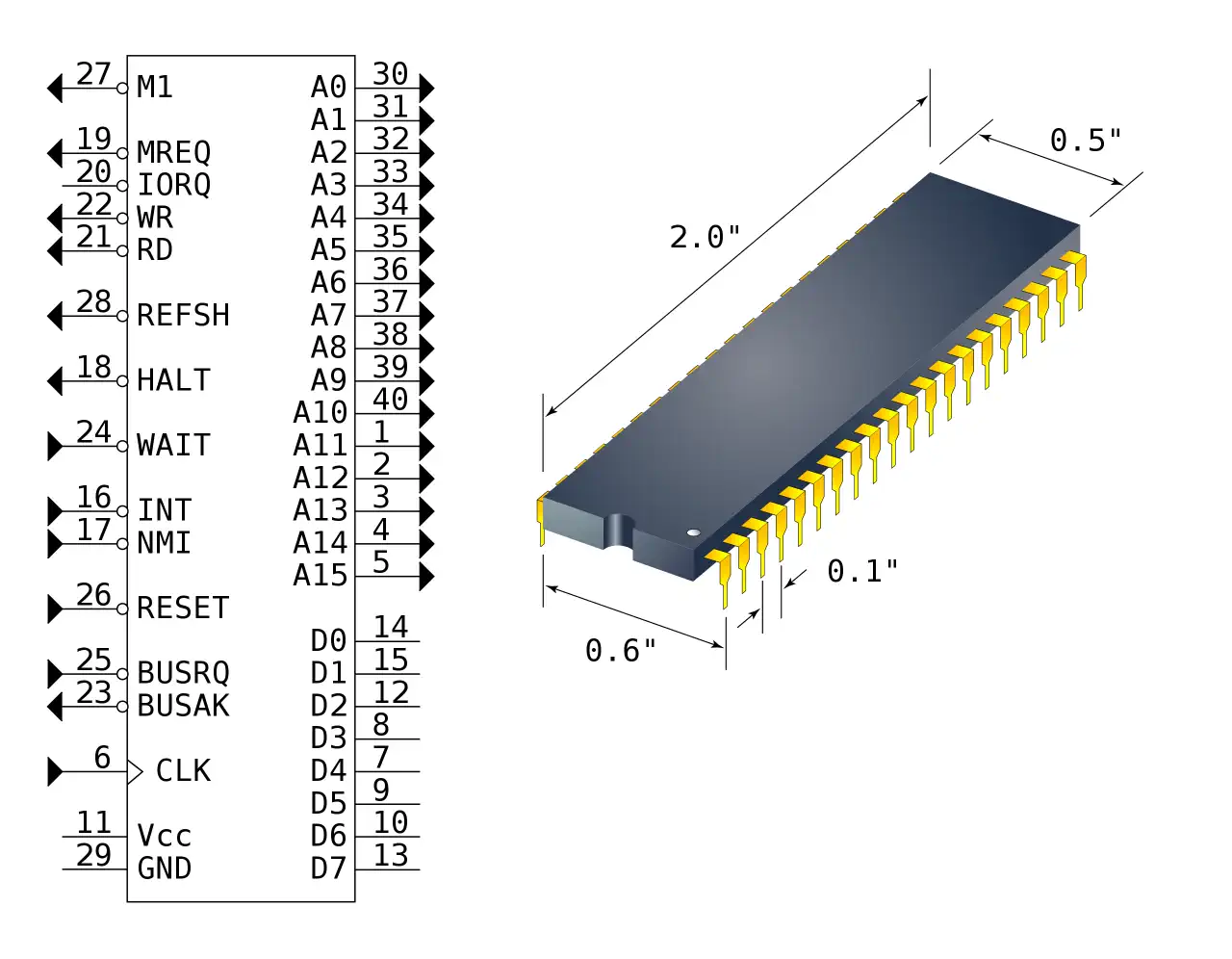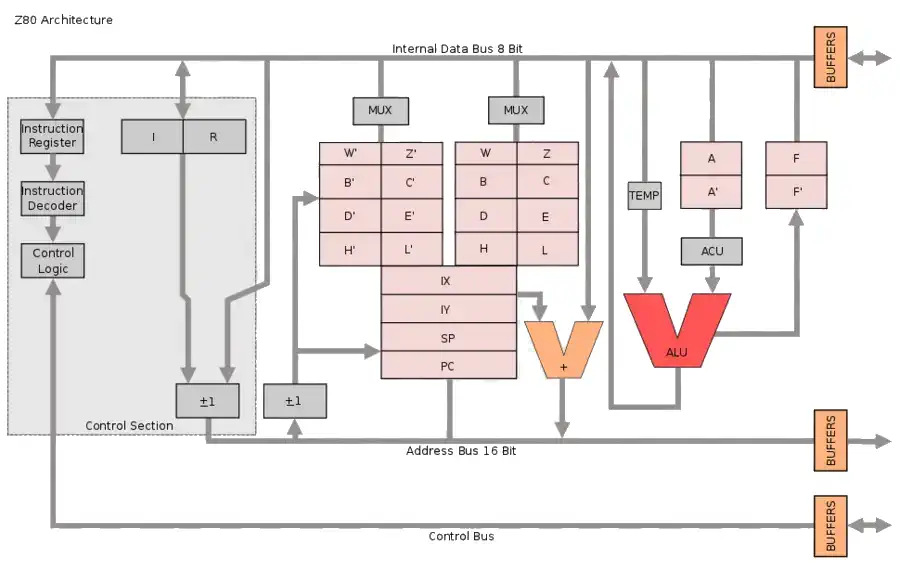Introduction
Sharp had two divisions making computers, the TV division and their home computer division.
The RGB display monitor for the X1 had a television tuner, and a computer screen could be super-imposed on TV. All the TV functions could be controlled from a computer program. The character font was completely programmable (PCG) with 4-bit color, and was effectively used in many games. The entirety of the VRAM memory was mapped on to the I/O area, so it was controlled without bank switching. These features made the X1 very powerful for game software.

Backside of the X1
The X1 has the following ports on the back:
- 6-pin DIN RGB Out
- TV Control (for use with special TVs)
- Printer Connector
- Two standard joystick connectors
- Mono Audio Out
- Four I/O slots
- Serial Keyboard Connector

CPU View - Zilog Z80 Family
The Z80 quickly became popular in the personal computer market, with many early personal computers, such as the TRS-80 and Sinclair ZX80, using the Z80 as their central processing unit (CPU). It was also widely used in home computers, such as the MSX range, SORD, and the Amstrad CPC, as well as in many arcade games. Additionally, it was also used in other applications such as industrial control systems, and embedded systems. The Z80 was widely used until the mid-1980s, when it was gradually replaced by newer microprocessors such as the Intel 80286 and the Motorola 68000.
The Z80 microprocessor was developed by Zilog, a company founded by Federico Faggin in 1974. The Z80 was released in July 1976, as a successor to the Intel 8080. It was designed to be fully compatible with the 8080, but also included new features such as an improved instruction set, more powerful interrupts, and a more sophisticated memory management system.
The Z80 quickly became popular in the personal computer


VRAM: 4kB Sound Chip General Instruments AY-3-8910 Sound 3 wave channels + white noise Display Chip PCG - Programmable Character Generator Display 320x200, 620x200
8 colors Best Color 8 colors Graphics 640x200 in 8 colors Sprites none System OS Hu-BASIC, CP/M Storage Built in Tape Drive

